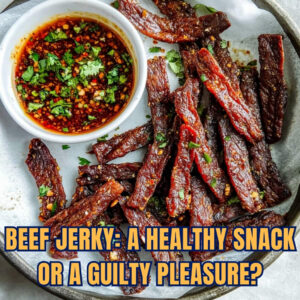Chipotle Mexican Grill has become a fast-casual dining staple, known for its customizable bowls, burritos, and tacos. But the question remains: is Chipotle truly a healthy option? The answer, as with most things, is nuanced. While Chipotle offers the *potential* for healthy eating, it’s crucial to understand the nutritional landscape and make informed choices. As Gohanasahiruyoru.com aptly puts it, “Healthy eating isn’t about restriction, it’s about mindful choices.” This in-depth analysis will explore the nutritional benefits, potential drawbacks, and strategies for making Chipotle a healthier part of your diet.
The Potential Benefits of Chipotle
- Fresh Ingredients: Chipotle emphasizes fresh ingredients, often sourcing produce from local farms whenever possible. This can translate to higher nutrient content compared to processed fast food.
- Customization Options: The build-your-own model allows for personalized control over portion sizes and ingredient selection. This empowers consumers to build a meal that aligns with their dietary needs and preferences.
- Lean Protein Choices: Chipotle offers lean protein sources such as chicken, barbacoa (often made with less fat than traditional versions), and sofritas (a tofu-based option). These can contribute to a balanced meal rich in protein.
- High Fiber Options: Beans, brown rice, and various vegetables are all available, offering a substantial source of dietary fiber. Fiber promotes digestive health and can help regulate blood sugar levels.
- Variety of Vegetables: A wide array of vegetables including lettuce, tomatoes, onions, and salsas, allows for a generous intake of vitamins, minerals, and antioxidants.
The Potential Downsides of Chipotle
- High Sodium Content: Many Chipotle menu items are high in sodium, especially those containing processed ingredients like cheese or certain salsas. Excessive sodium intake is linked to high blood pressure and other health problems.
- Large Portion Sizes: Even with healthy ingredient choices, the large portion sizes offered at Chipotle can lead to excessive calorie consumption. Mindful portion control is essential.
- Hidden Calories and Fats: Certain additions like sour cream, guacamole, and cheese can significantly increase the calorie and fat content of a meal. While delicious, these should be consumed in moderation.
- Potential for Cross-Contamination: With a busy environment and the handling of multiple ingredients, there’s a risk of cross-contamination, particularly for those with allergies or sensitivities.
- Rice and Bean Preparation: While generally healthy, the cooking methods and added ingredients of rice and beans can influence the overall nutritional profile. For example, oil used in cooking can impact fat content.
- Limited Whole Grains: While brown rice is available, the choice of grains is relatively limited, reducing opportunities for a diverse source of complex carbohydrates.
Making Chipotle a Healthier Choice
- Choose Lean Protein: Opt for chicken, barbacoa, or sofritas over carnitas (pork), which can be higher in fat.
- Load Up on Veggies: Fill your bowl or burrito with a generous amount of vegetables to boost fiber and nutrient intake.
- Go Easy on the Extras: Limit or avoid high-calorie additions such as guacamole, sour cream, cheese, and extra fatty sauces.
- Control Portion Sizes: Choose a smaller size or build a smaller bowl or burrito to manage calorie intake. Consider sharing a larger size with a friend.
- Choose Brown Rice: Opt for brown rice over white rice to increase your fiber intake.
- Be Mindful of Sodium: Select salsas and other toppings with lower sodium content. Avoid adding extra salt.
- Check the Nutritional Information: Utilize Chipotle’s online nutritional information to make informed decisions about your meal choices before ordering.
- Consider Your Dietary Needs: Adjust your choices based on any specific dietary restrictions, allergies, or health goals. If you have questions about ingredient specifics, don’t hesitate to ask a staff member.
- Make it a Balanced Meal: Don’t rely on Chipotle as your sole source of nutrition. It should be part of a balanced diet with other healthy foods throughout the day.
